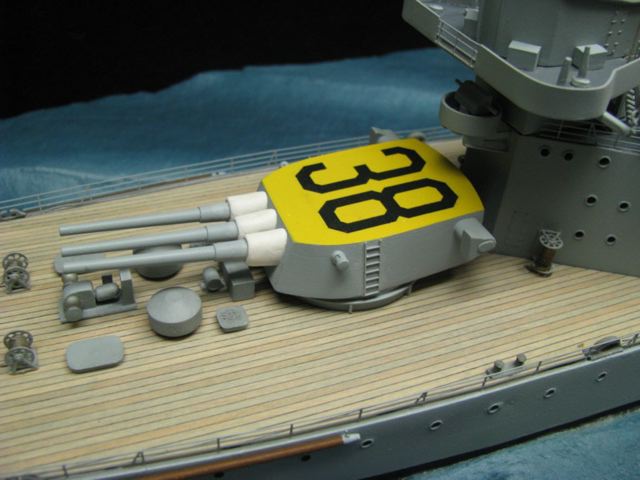| Length overall | 588 feet |
| Beam | 61 feet 9 inches |
| Draft | 23 feet |
| Displacement | 9, 950 tons |
| Power plant | 8 boilers driving 4 Westinghouse turbines, giving 107, 000 horsepower and a top speed of 32. 75 knots |
| Armament | 9 - 8”/55 cal
main battery
8 - 5”/25 cal antiaircraft 8 - 0.50 cal machine guns |
| Aircraft | 4 - Vought O3U-3 Corsair float planes |
| Complement | 101 officers 803 enlisted men |
| Plans |
|
| Books and publications |
|
| Internet sources
(Google searches for websites and photos) |
|
| Individual sources - from personal Interviews and conversations |
|
The main and secondary gun directors were fabricated and installed. I looked fruitlessly for months trying to find what the directors actually looked like from above. None of my sources could help me. Finally I happened across a picture of Astoria being refit, which was taken looking down into the director. That information, combined with the Friedman book on weapons allowed me to construct the directors accurately.
All the inclined ladders, stanchions and railings are photo etch from Bluejacket. It was a generic sheet in the proper scale; I was able to cut and fit all the necessary pieces. I am a nut about railings. As best I could, I mounted the railings down in the waterway where the lowest railing would not be seen. And doing it this way, I have a natural guide, so the rails don’t wander. (Too badly) Notice that the upper rails connect at each change of direction. A tiny crew man would not fall. The treads of the inclined ladders are properly oriented, so that same crew man could climb up and down. Various staffs, booms, paravanes, pipes and hoses were fabricated and installed. Where necessary, they were tapered to scale size or slightly smaller for enhanced appearance. Photo etch ladders were installed on the sides of the turrets and up the masts. Navigation lights were fabricated from plastic sheet and glass beads. |
| Art McArdle, an enlisted member of San Francisco's flight crew insists that the entire #3 turret top was painted chrome yellow for recognition. Published data is unclear on that point. Art was there, and it was important for him to be able to spot his ship and get home. I took his word for it. |

© ModelWarships.com